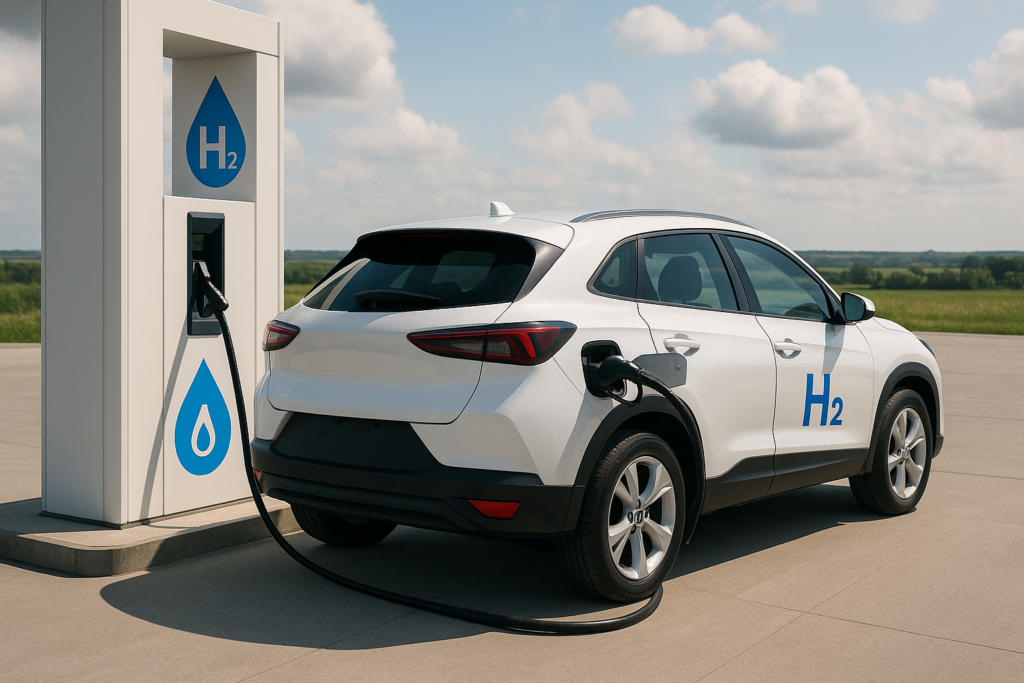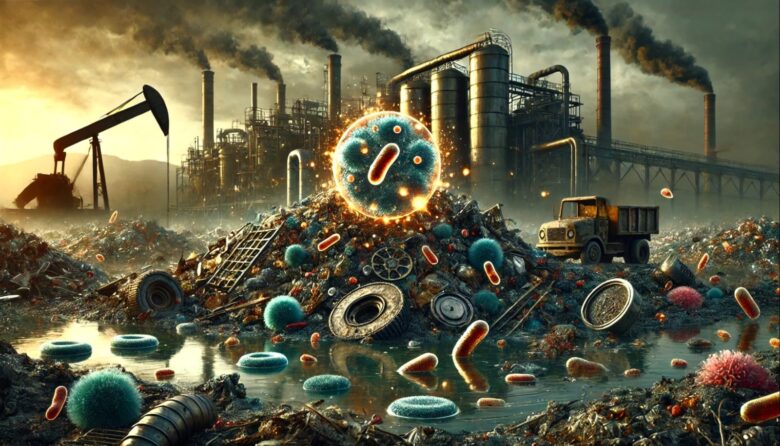The world has reached a pivotal point in its energy utilization. Climatic changes and air pollution press towards the need for a clean, sustainable, and reliable source of energy (Omer, 2008). Conventional fuels, such as coal, natural gas, oil, etc., are routinely used as the primary energy source. For centuries, fossil fuels have dominated other energy sources, but their use is gradually coming to an end. (Zou, Zhao, Zhang, & Xiong, 2016). Replacement of traditional fuels is crucial because of limited supply and their contribution to greenhouse gases. With the use of fossil fuels declining, a new era of hydrogen-powered energy may be emerging with the potential for a greener future (Qazi, 2022).
Hydrogen is the first element in the periodic table, the lightest and the most abundant element on earth, with an atomic mass of 1 atomic mass unit (AMU). Habib et al. (2024) discuss hydrogen as a highly reactive gas that can combust efficiently in air, generating energy and producing only water vapors.
Hydrogen fuel shows a lot of potential because of its high energy density and non-toxic by-products (Zhang et al., 2024). Fossil fuels are now being substituted with hydrogen to reduce greenhouse gas emissions, pollution, and land degradation that comes with fuel extraction.
Methods of Production of Hydrogen Fuel
There are multiple processes of hydrogen production. The most common method, accounting for 90% of hydrogen production globally, is Steam Method Reforming (SMR) (Haryanto et al., 2005). In SMR, steam reacts with methane gas at elevated temperatures and high pressure. This reaction takes place in the presence of a nickel-based catalyst – a chemical specie that lowers the activation energy of a reaction (Kaiwen et al., 2018). The efficiency of SMR is approximately 70-80%, and it operates at lower costs than other methods of hydrogen production (Ranjekar & Yadav, 2021).
Another method is the electrolysis of water, where electrical energy decomposes water into hydrogen and oxygen molecules (El-Shafie, 2023). This can be achieved by wind or solar-powered electrolysis, integrating renewable energy sources with electrolysis for hydrogen generation. (Mahmood et al., 2024). The efficiency of electrolysis depends on the reaction conditions, electrolyte, and electrode material.
2H2O → 2H2 + O2
Biomass (such as agricultural waste) conversion to hydrogen by heating or using microorganisms such as bacteria or algae is also an effective method for hydrogen production. Biomass gasification typically involves heating biomass in the presence of steam and oxygen to produce hydrogen (Pal et al., 2022). Biomass can be sourced from a range of feedstocks, contributing to waste valorization and management.
Benefits of Hydrogen Fuel
Hydrogen fuel produces zero emissions, emitting only water vapor and heat energy, unlike fossil fuels (Dash et al., 2022). This makes them an attractive replacement as a clean burning fuel as it reduces carbon emissions and mitigates the effects of climate change.

As it is the most abundant element, hydrogen fuel is virtually a limitless resource (Xu et al., 2022). It can be integrated well into the existing energy infrastructure, such as transportation or industrial processes, as it can be produced domestically. Hydrogen production potential mainly depends on a region’s fossil fuel resources, renewable energy resources and their technological development.
Countries currently working towards “green hydrogen” production (without the use of fossil fuels) are Australia, Russia, India, Canada, China, and USA (Panchenko et al., 2023). This also reduces dependence on imported fossil fuels and improves energy self-sufficiency (Curtis, 2023).
Limitations of Hydrogen Fuel
Despite its numerous benefits, hydrogen fuel usage comes with multiple limitations. One of the main limitations is its production cost; highly advanced machinery and equipment are required for hydrogen generation (Stępień, 2021). The production from solar and wind power is still in its infancy, as it requires high investments in infrastructure and technology (Qazi, 2022).
Additionally, the safety of hydrogen fuel is also an issue because of its highly exothermic (energy-releasing) reaction with oxygen. Hydrogen gas is highly explosive and causes storage and handling issues (Calabrese et al., 2024). As hydrogen gas has high pressure, it also has to be stored in a well-designed high-pressure tank to prevent blasts (Rajalakshmi, Balaji, & Ramakrishnan, 2021). Despite these challenges, researchers and industrialists are working on making hydrogen fuel a more viable and sustainable option for everyday use.
Conclusion
In conclusion, hydrogen fuel is a promising solution for transitioning to a low-carbon economy. It has various applications and benefits, including zero emissions, a high energy density per unit mass, and a cleaner fuel overall. The water vapors produced by hydrogen fuel can be condensed and reused for electrolysis, reducing water consumption (Simoes et al., 2021). However, addressing hydrogen storage and transportation issues is integral before implementation to prevent potential disasters and ensure safety.
The future of hydrogen fuel looks promising, with multiple countries investing heavily in research and development on hydrogen. The European Union has introduced a comprehensive strategy to replace fossil fuels with hydrogen, including funding research to increase scalability. Likewise, Germany has introduced the National Hydrogen Strategy focusing on reducing carbon emissions and achieve greenhouse gas neutrality. Canada’s province of British Colombia has introduced incentives to promote hydrogen powered vehicles by providing financial incentives as well as constructing refueling stations.
By addressing the mentioned key issues, hydrogen fuel can be seamlessly integrated into everyday life as a limitless source of fuel.
References
Calabrese, M., Portarapillo, M., Di Nardo, A., Venezia, V., Turco, M., Luciani, G., & Di Benedetto, A. (2024). Hydrogen safety challenges: a comprehensive review on production, storage, transport, utilization, and CFD-based consequence and risk assessment. Energies, 17(6), 1350.
Curtis, A. J. B. (2023). A Framework for Assessing Energy Exporting Countries’ Vulnerability and Energy Security: Current Fossil Fuel-Dependent Economy and Future Hydrogen Economy.
Dash, S. K., Chakraborty, S., Roccotelli, M., & Sahu, U. K. (2022). Hydrogen fuel for future mobility: Challenges and future aspects. Sustainability, 14(14), 8285.
El-Shafie, M. (2023). Hydrogen production by water electrolysis technologies: A review. Results in Engineering, 20, 101426.
Habib, M. A., Abdulrahman, G. A., Alquaity, A. B., & Qasem, N. A. (2024). Hydrogen combustion, production, and applications: A review. Alexandria Engineering Journal, 100, 182-207.
Haryanto, A., Fernando, S., Murali, N., & Adhikari, S. (2005). Current status of hydrogen production techniques by steam reforming of ethanol: a review. Energy & Fuels, 19(5), 2098-2106.
Kaiwen, L., Bin, Y., & Tao, Z. (2018). Economic analysis of hydrogen production from steam reforming process: A literature review. Energy Sources, Part B: Economics, Planning, and Policy, 13(2), 109-115.
Mahmood, A., Aljohani, K., Aljohani, B. S., Bukhari, A., & Abedin, Z. U. (2024). Electrifying Solutions: MOFs and Multi-Metal Nanomaterials for Sustainable Methanol Electro-oxidation and CO2 Reduction. Materials Today Sustainability, 100966.
Omer, A. M. (2008). Energy, environment and sustainable development. Renewable and sustainable energy reviews, 12(9), 2265-2300.
Pal, D. B., Singh, A., & Bhatnagar, A. (2022). A review on biomass based hydrogen production technologies. International Journal of Hydrogen Energy, 47(3), 1461-1480.
Panchenko, V. A., Daus, Y. V., Kovalev, A. A., Yudaev, I. V., & Litti, Y. V. (2023). Prospects for the production of green hydrogen: Review of countries with high potential. International Journal of Hydrogen Energy, 48(12), 4551-4571.
Qazi, U. Y. (2022). Future of hydrogen as an alternative fuel for next-generation industrial applications; challenges and expected opportunities. Energies, 15(13), 4741.
Ranjekar, A. M., & Yadav, G. D. (2021). Steam reforming of methanol for hydrogen production: A critical analysis of catalysis, processes, and scope. Industrial & Engineering Chemistry Research, 60(1), 89-113.
Rajalakshmi, N., Balaji, R., & Ramakrishnan, S. (2021). Recent developments in hydrogen fuel cells: Strengths and weaknesses. Sustainable Fuel Technologies Handbook, 431-456.
Sharma, S., Agarwal, S., & Jain, A. (2021). Significance of hydrogen as economic and environmentally friendly fuel. Energies, 14(21), 7389.
Simoes, S. G., Catarino, J., Picado, A., Lopes, T. F., Di Berardino, S., Amorim, F., … & de Leao, T. P. (2021). Water availability and water usage solutions for electrolysis in hydrogen production. Journal of Cleaner Production, 315, 128124.
Stępień, Z. (2021). A comprehensive overview of hydrogen-fueled internal combustion engines: Achievements and future challenges. Energies, 14(20), 6504.
Xu, X., Zhou, Q., & Yu, D. (2022). The future of hydrogen energy: Bio-hydrogen production technology. International Journal of Hydrogen Energy, 47(79), 33677-33698.
Yue, M., Lambert, H., Pahon, E., Roche, R., Jemei, S., & Hissel, D. (2021). Hydrogen energy systems: A critical review of technologies, applications, trends and challenges. Renewable and Sustainable Energy Reviews, 146, 111180.
Zhang, L., Jia, C., Bai, F., Wang, W., An, S., Zhao, K., … & Sun, H. (2024). A comprehensive review of the promising clean energy carrier: Hydrogen production, transportation, storage, and utilization (HPTSU) technologies. Fuel, 355, 129455.
Zou, C., Zhao, Q., Zhang, G., & Xiong, B. (2016). Energy revolution: From a fossil energy era to a new energy era. Natural Gas Industry B, 3(1), 1-11.






